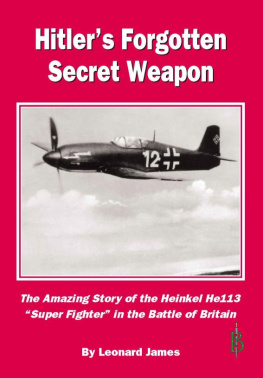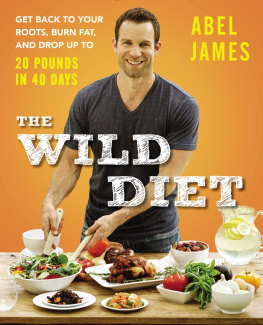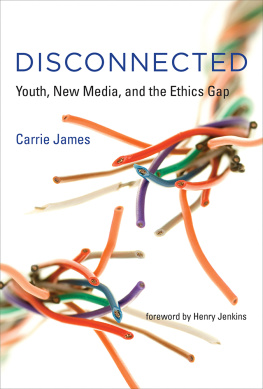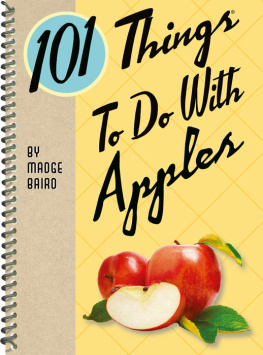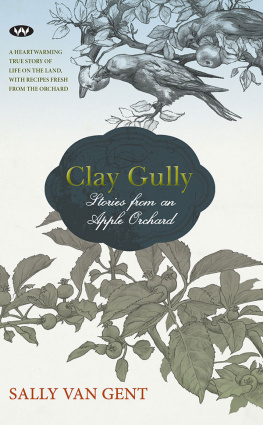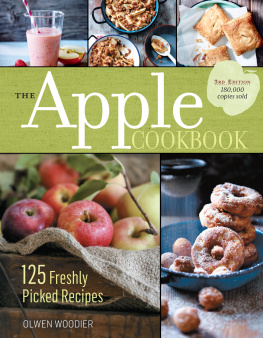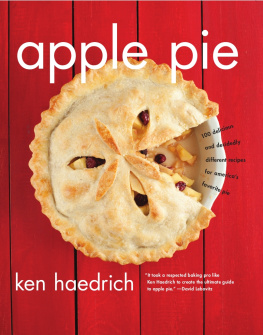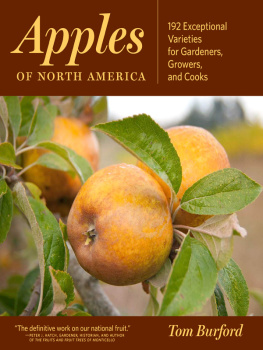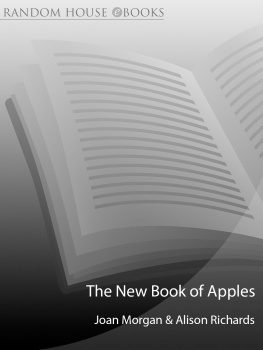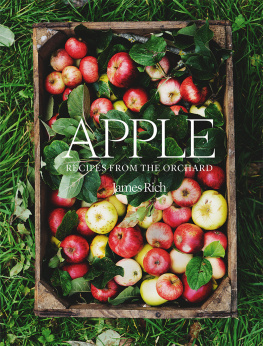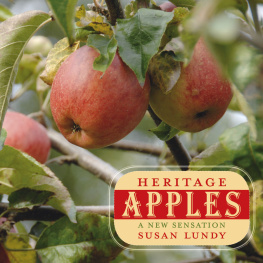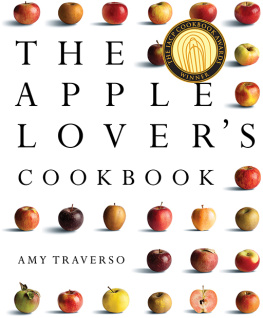James - Apple: recipes from the orchard
Here you can read online James - Apple: recipes from the orchard full text of the book (entire story) in english for free. Download pdf and epub, get meaning, cover and reviews about this ebook. City: London, year: 2019, publisher: Hardie Grant UK Ltd, genre: Home and family. Description of the work, (preface) as well as reviews are available. Best literature library LitArk.com created for fans of good reading and offers a wide selection of genres:
Romance novel
Science fiction
Adventure
Detective
Science
History
Home and family
Prose
Art
Politics
Computer
Non-fiction
Religion
Business
Children
Humor
Choose a favorite category and find really read worthwhile books. Enjoy immersion in the world of imagination, feel the emotions of the characters or learn something new for yourself, make an fascinating discovery.
- Book:Apple: recipes from the orchard
- Author:
- Publisher:Hardie Grant UK Ltd
- Genre:
- Year:2019
- City:London
- Rating:4 / 5
- Favourites:Add to favourites
- Your mark:
- 80
- 1
- 2
- 3
- 4
- 5
Apple: recipes from the orchard: summary, description and annotation
We offer to read an annotation, description, summary or preface (depends on what the author of the book "Apple: recipes from the orchard" wrote himself). If you haven't found the necessary information about the book — write in the comments, we will try to find it.
Apple: recipes from the orchard — read online for free the complete book (whole text) full work
Below is the text of the book, divided by pages. System saving the place of the last page read, allows you to conveniently read the book "Apple: recipes from the orchard" online for free, without having to search again every time where you left off. Put a bookmark, and you can go to the page where you finished reading at any time.
Font size:
Interval:
Bookmark:






Of course, they also famously feature in the Book of Genesis, referring to the forbidden fruit in the garden of Eden, though this is hotly disputed (especially as the fig leaf is the only reference made to any trees). You might say that the apple is a beacon of human health and prosperity, and very few other fruits, or even vegetables for that matter, have had as big an impact or been as symbolic as that of the humble but unapologetic apple. In fact, you might even say that the apple is so important, so intrinsically entwined with human history and everyday life, that it deserves its very own book: a celebration of one of the most important and popular fruits in the world. While I know this isnt the first, and certainly wont be the last, book written on the subject of the apple, this is my celebration. The recipes Ive collected here feature the apple as their hero in all its forms from whole apples to apple compte, and cider to cider brandy almost 100 recipes featuring all kinds of varieties. Youll find traditional old favourites, like apple crumble and pork with cider, as well as some new experiments and flavour combinations from my kitchen.
A personal fanfare to the absolutely not-so-forbidden fruit. My personal connection to apples started at a very young age, having grown up in the countryside of Somerset, in south-west England, which is full of apple orchards and the home of English cider. Some of my fondest memories are of exploring verdant apple orchards with my sisters; climbing trees and rummaging through the thickets to find creatures like frogs, toads and newts sheltering under old pieces of wood and in ponds and ditches. All the while, dad tended to, and pruned the apple trees. My father is a master cider maker and, along with our cousins, continues the family business that has been producing traditional Somerset cider for generations. In fact, were not quite sure how far back the cider-making goes in my family, but there are records of the Rich family in the area since 1612.
Much of Somerset is below sea level, known as the Somerset levels. In centuries past, this resulted in a scarcity of safe drinking water. Because of the lack of any water drainage or filtration systems the water that was available could carry all sorts of nasties that frequently made people ill and even caused fatalities. It was logical, then, that the people resorted to drinking other forms of liquid to ensure they got their daily hydration. Landowners and farmers would make cider, which through the fermenting process killed any harmful bacteria, and would often trade cider as payment or part-payment in return for labour. The farmers and landowners got their hard physical jobs completed and the workers got their safe drinking water.
This barter of labour for one of the essentials of life went on for centuries before modern water services were installed, and it is generally accepted as part of the reason that cider, and also beer, came to prominence. Cider-making officially became a family business when my great-uncle Gordon opened the gates to Mill Farm in 1954, selling Somersets golden nectar to the public. Richs Cider Farm grew from strength to strength as cider became increasingly popular, and is now run by Gordons daughter, Jan, and her family along with my dad. I have many memories of helping Dad out on the cider farm while growing up: planting the orchards, harvesting the apples, pressing them to gather the juice for making, and even clambering inside the giant 5,700-litre (10,000-pint) oak vats that are used during the fermenting process, to help clean them out. Today, the cider farm not only encompasses the cider-making facilities, but it also has a shop, museum and restaurant. I may be biased, but what my family doesnt know about the famous apple, quite simply, isnt worth knowing.
There are more than 2,500 varieties of apple grown in the UK and more than 4,500 in the USA. Some have been cultivated for centuries there is evidence, for example, in the Jordan Valley of apples dating back to 6,500 BC while other types are relatively young. New varieties are being discovered and bred every year as global demand continues to grow. The apple, or Malus domestica, is a member of the rose family. It is related closely not only to pears and quinces, but also plums, blackberries and even strawberries. It is widely accepted that apple trees originate from the forests of Kazakstan and that the Romans were largely responsible for the movement of trees around its Empire, creating popular demand for the fruit and cementing it as a mainstay of the diet throughout many regions of the world.
Everything from the apple blossom* to the fallen fruit can be used in cooking, making apples a hardy, versatile and delicious essential in the kitchen. Even smoking apple wood on the barbecue imparts a subtle sweet and fruity flavour to meat, fish and vegetables. Apples come in many different shapes and sizes, flavours and textures. There are thousands of varieties across the world, each with distinctive characteristics that make it most suitable to be enjoyed in particular recipes. Much of this depth of variety is thanks to the fact that every apple tree is unique. Most apple trees breed through cross-pollination: the pollen from one tree being deposited on the stigma of another tree by bees and insects or by the wind to fertilise it.
Trees belong to specific, compatible pollinating groups that give the best resulting fruit. The seeds from each apple of that tree create independent offspring, because they are a cross between the original tree and the one that it has been pollinated with. The fruit of the resulting tree will therefore be a mix between the two parents and a different apple to the original parent or even its sibling trees. This can often result in orchards having a tendency to being home to a whole host of apple tree varieties and mixes growing together. To help combat this and generate consistent apples from the trees, master apple growers cultivate their trees in a very specific way, by taking the rootstock, which is an existing and established set of roots, and grafting a tree bud or growth to that stock. (Pears, plums, cherries and medlars are also grown in this way.) Using rootstock allows consumers to buy apples of a consistent style and variety from supermarkets or suppliers. (Pears, plums, cherries and medlars are also grown in this way.) Using rootstock allows consumers to buy apples of a consistent style and variety from supermarkets or suppliers.
Font size:
Interval:
Bookmark:
Similar books «Apple: recipes from the orchard»
Look at similar books to Apple: recipes from the orchard. We have selected literature similar in name and meaning in the hope of providing readers with more options to find new, interesting, not yet read works.
Discussion, reviews of the book Apple: recipes from the orchard and just readers' own opinions. Leave your comments, write what you think about the work, its meaning or the main characters. Specify what exactly you liked and what you didn't like, and why you think so.



